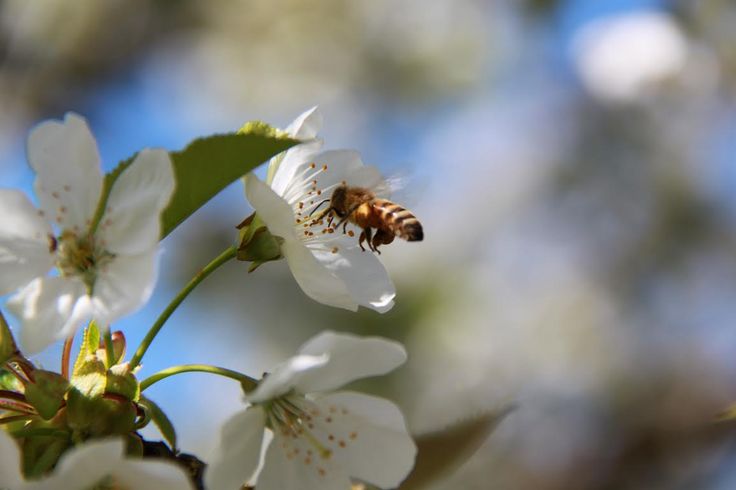Additional information:
- Overall rating for honeydew: 2/5
- Nectar: 2/3
- Pollen: 2/3
- Color: White/Beige
Blooming Cherry tree in Contra Costa County California:
- March 10, 2024
- February 25, 2023
- February 18, 2022
I’m proud to help pollinate Brentwood’s cherry trees with my local bees, which forage all year round in the Bay Area of San Francisco (California).
Bees play a paramount role in the pollination of cherry trees, a process critical for the production of cherries, and the interconnectedness between bees and cherry trees is a fascinating tale of co-evolution and mutual benefit.
At the heart of this relationship lies the intricate dance of pollination. Cherry trees, like many flowering plants, rely on the transfer of pollen from the male reproductive organs (the stamens) to the female reproductive organs (the pistils) for fertilization to occur. This fertilization process leads to the development of fruit, in this case, cherries. Bees, with their foraging behaviors, inadvertently facilitate this process as they visit cherry blossoms in search of nectar and pollen. As they move from flower to flower, bees transfer pollen grains, aiding in the crucial fertilization process.
One of the primary reasons bees are particularly effective pollinators of cherry trees is their behavior. Bees, especially honeybees and native bee species like bumblebees and solitary bees, exhibit a behavior known as “buzz pollination.” During buzz pollination, the bee grabs onto the flower and vibrates its flight muscles rapidly, causing the flower to release its pollen. Cherry blossoms, like those of many other plants such as tomatoes and blueberries, have anthers that are tightly packed, making it difficult for pollen to be released. Bees’ buzz pollination technique is particularly adept at dislodging this pollen, making them highly efficient pollinators for cherry trees.
Furthermore, the relationship between cherry trees and bees extends beyond mere pollination; it also encompasses aspects of biodiversity and ecological resilience. Bees, through their pollination activities, facilitate cross-pollination between different cherry tree varieties, leading to increased genetic diversity within cherry populations. This genetic diversity is crucial for the long-term health and resilience of cherry tree populations, as it can confer resistance to diseases and pests and enhance adaptability to changing environmental conditions.
From an economic standpoint, the role of bees in cherry pollination cannot be overstated. Cherries are not only a beloved fruit but also a commercially valuable crop in many regions worldwide. The effective pollination of cherry trees by bees is directly linked to the quantity and quality of cherry yields. Adequate pollination results in larger, more abundant, and higher-quality cherries, thereby enhancing the economic viability of cherry farming operations. Conversely, insufficient pollination can lead to reduced yields, lower-quality fruit, and economic losses for cherry growers.
However, the relationship between bees and cherry trees faces challenges in the modern world. Factors such as habitat loss, pesticide use, climate change, and the spread of diseases and parasites threaten bee populations, jeopardizing their ability to effectively pollinate cherry trees and other flowering plants. Conservation efforts aimed at protecting bee populations and their habitats are therefore essential to ensure the continued success of cherry cultivation and the preservation of biodiversity.
In conclusion, bees are indispensable allies in the cultivation of cherries, serving as efficient pollinators that contribute to the quantity, quality, and genetic diversity of cherry yields. Their intricate relationship with cherry trees underscores the interconnectedness of species in the natural world and highlights the importance of preserving biodiversity and ecosystems for the benefit of both humans and the environment. By understanding and valuing the vital role that bees play in cherry pollination, we can work towards sustainable agricultural practices that support healthy bee populations and ensure the continued abundance of cherries for generations to come.

